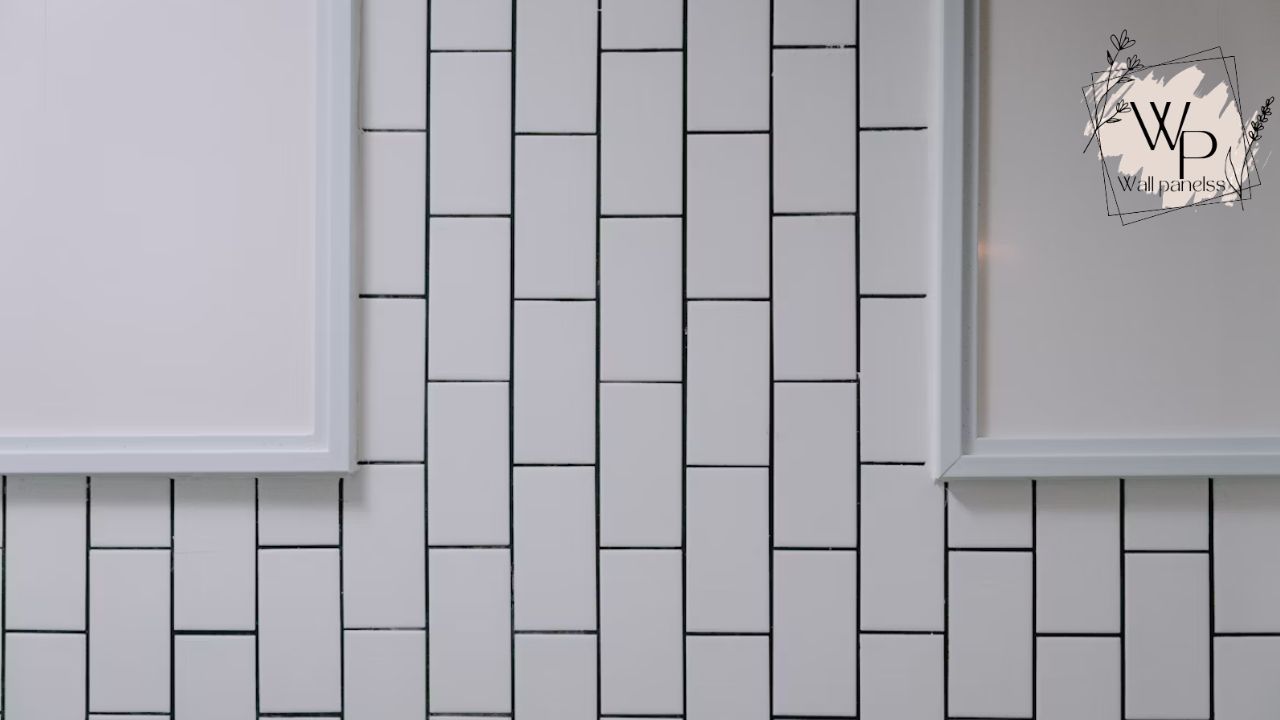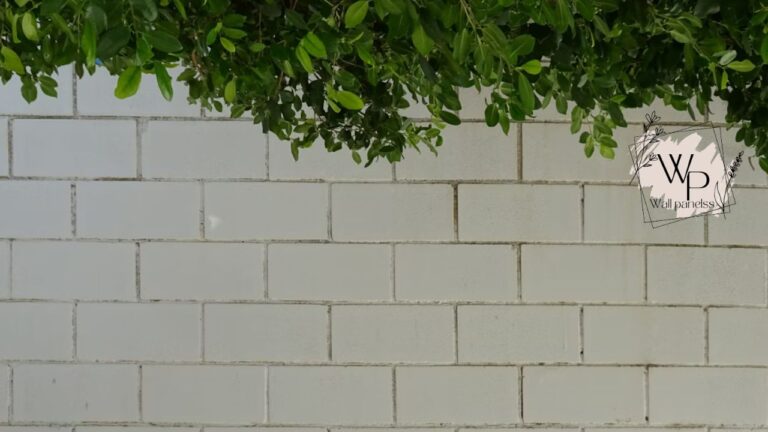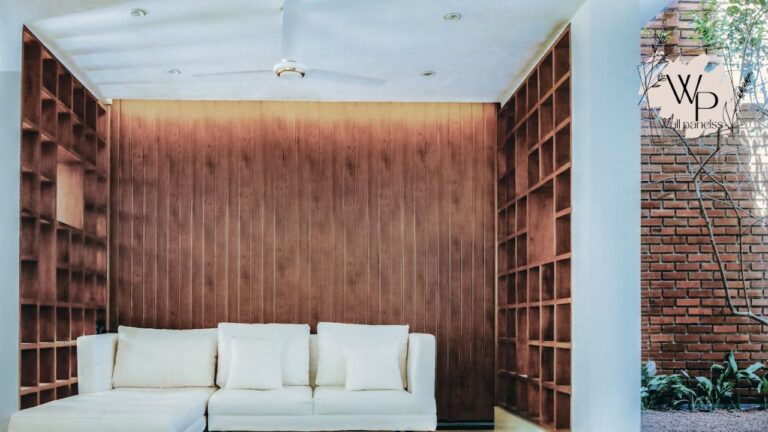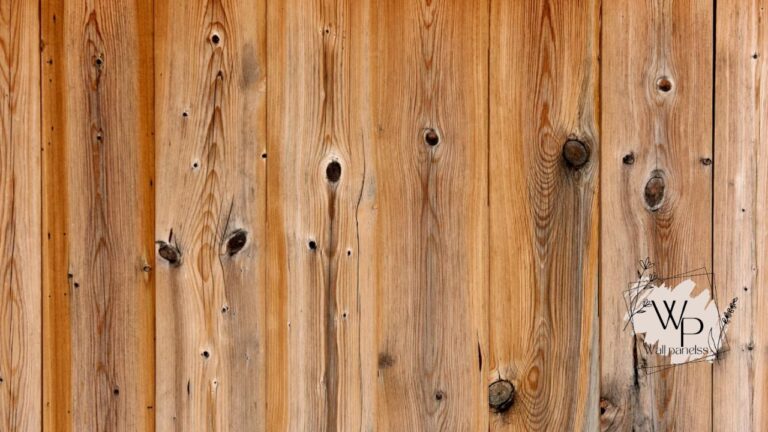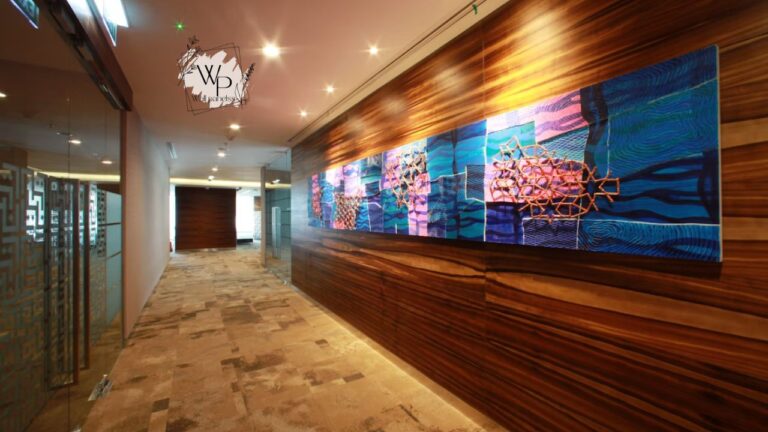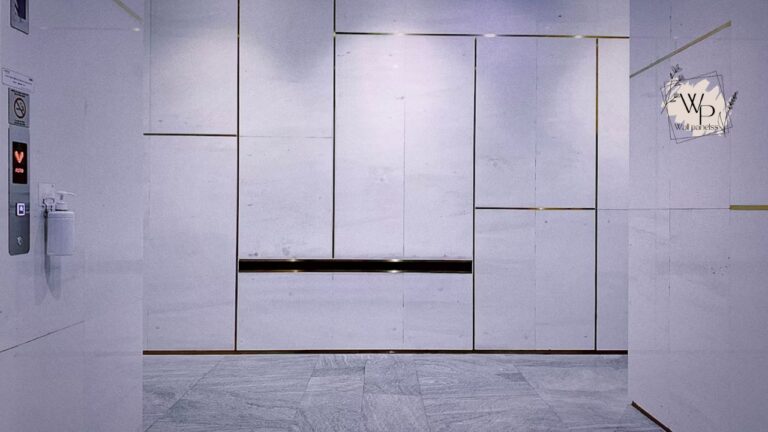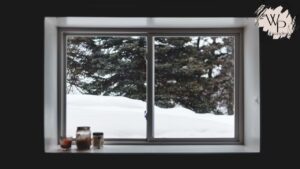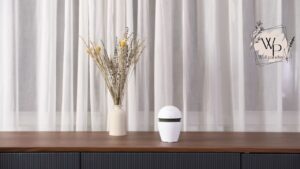Are you dreaming of a home makeover but dreading the thought of a long, messy, and expensive renovation? You’re not alone. Many homeowners crave a fresh look for their spaces without the hassle. This is where the magic of PVC wall tiles comes into play, offering a stunning and practical solution for transforming your interiors.
These versatile panels are rapidly gaining popularity for their affordability, ease of installation, and incredible range of designs. Whether you want the rustic charm of wood, the sleek elegance of marble, or a bold geometric pattern, there’s a PVC wall tile that can bring your vision to life. Let’s dive into everything you need to know about this game-changing decor material.
PVC Wall Tiles at a Glance
To give you a quick overview, here’s a summary of what makes these tiles a fantastic choice for modern homes.
| Feature | Description |
|---|---|
| Material | Polyvinyl Chloride (PVC) |
| Common Uses | Kitchens, bathrooms, living rooms, bedrooms, offices |
| Key Benefits | Waterproof, durable, easy to clean, simple installation |
| Average Cost | $2 – $8 per square foot |
| Installation Type | Peel-and-stick, glue-up, or tongue-and-groove |
| Design Options | 3D textures, faux brick, wood, stone, marble, patterns |
| Lifespan | 10 – 25 years, depending on quality and usage |
What Exactly Are PVC Wall Tiles?
At their core, PVC wall tiles are decorative panels made from a durable plastic called Polyvinyl Chloride. Think of them as a modern, more flexible alternative to traditional ceramic, porcelain, or natural stone tiles. They are engineered to be lightweight yet incredibly tough, making them a practical choice for a wide range of applications.
These tiles are not just simple plastic sheets. Advanced manufacturing techniques allow them to mimic the look and even the texture of high-end materials. You can find options that convincingly replicate weathered brick, polished marble, reclaimed wood, and intricate mosaics. This means you can achieve a luxurious aesthetic without the associated cost and maintenance.
One of the most appealing aspects of PVC wall tiles is their user-friendly design. Most options are created for DIY installation, often featuring a simple peel-and-stick backing or an interlocking system. This accessibility empowers homeowners to take control of their renovation projects, saving a significant amount of money on professional labor. It’s a truly rewarding feeling to step back and admire a wall you transformed yourself.
A Brief History: The Evolution of PVC in Decor
PVC itself isn’t new. It was first synthesized in the 19th century and commercialized in the 1920s. Its initial uses were primarily industrial due to its durability and resistance to chemicals and moisture. You might know it from its use in pipes, flooring, and window frames.
The journey of PVC into the world of decorative wall coverings is a more recent development. As manufacturing technology improved, designers realized the material’s potential for aesthetic applications. The ability to emboss, print, and shape PVC opened up a world of possibilities.
In the late 20th century, we started seeing PVC used for wall panels, but the early versions were often seen as a cheap, uninspired option. They lacked the realistic textures and sophisticated designs available today. However, the 21st century brought a revolution. Digital printing and 3D molding technologies transformed PVC wall tiles from a budget compromise into a desirable design element. Now, they are celebrated for their ability to deliver both style and substance.
The Undeniable Advantages of Choosing PVC Wall Tiles
Why has the interest in PVC wall tiles exploded in recent years? The benefits are numerous and compelling, addressing many of the common pain points associated with traditional tiling.
Unmatched Water Resistance
This is arguably the most significant advantage. PVC is inherently non-porous, which means it is 100% waterproof. It will not absorb moisture, swell, warp, or grow mold and mildew like some other materials can.
This quality makes PVC wall tiles an absolutely perfect choice for moisture-prone areas.
- Bathrooms: Protect your walls from shower spray and steam.
- Kitchens: Use them as a backsplash to easily wipe away splashes from the sink or stove.
- Laundry Rooms: Shield walls from humidity and potential leaks.
- Basements: Provide a durable wall covering that won’t be damaged by damp conditions.
Unlike ceramic tiles, there is no grout to seal or worry about staining. The seamless or tightly interlocked nature of the panels creates a continuous waterproof barrier that is incredibly easy to maintain.
Effortless Installation: A DIY Dream
For many, the thought of tiling a wall brings to mind images of messy mortar, complicated tools, and days of labor. With PVC wall tiles, that intimidating process is a thing of the past.
The Peel-and-Stick Method
This is the most popular and straightforward option. The tiles come with a pre-applied adhesive on the back, protected by a peel-off film. The process is as simple as:
- Prepare the Wall: Ensure it’s clean, dry, and smooth.
- Peel: Remove the backing paper from the tile.
- Stick: Press the tile firmly onto the wall.
It’s a clean, quick, and satisfying process. Most homeowners can complete an entire accent wall in just a few hours with minimal tools—usually just a measuring tape and a utility knife for any necessary cuts.
Other Installation Systems
Besides peel-and-stick, you might find tongue-and-groove panels that click together for a seamless look, or larger sheets that are installed with a construction adhesive. Even these methods are far less labor-intensive than traditional tiling. This DIY-friendly nature not only saves money but also provides a tremendous sense of accomplishment.
Durability and Longevity
Don’t let the lightweight nature of PVC fool you; these tiles are built to last. The material is resistant to scratches, dents, and impacts, making it a durable surface for busy households. It doesn’t crack or chip like ceramic tiles can if something hits them.
The printed designs are also protected by a tough wear layer, which prevents them from fading over time, even in rooms that get a lot of sunlight. With proper care, a quality installation of PVC wall tiles can look fresh and vibrant for 10 to 25 years.
A World of Design Possibilities
This is where the fun really begins. The versatility of PVC allows for an almost limitless range of styles.
- 3D Textured Panels: These add depth and shadow, creating a dynamic feature wall that becomes an instant focal point. Popular designs include waves, geometric shapes, and floral patterns.
- Faux Finishes: Get the high-end look without the cost. PVC wall tiles that mimic brick, stone, and wood are incredibly realistic, right down to the texture. You can create a rustic brick backsplash or a sophisticated marble shower surround for a fraction of the price of the real thing.
- Modern Patterns: From intricate Moroccan-inspired designs to sleek, minimalist lines, there is a pattern to suit any interior design scheme.
This vast selection empowers you to personalize your space and create a look that is uniquely yours.
Hearing from the Homeowners: Reviews and Ratings
When considering a new product, real-world feedback is invaluable. We’ve sifted through countless user reviews to get a sense of what people truly think about their PVC wall tiles. The consensus is overwhelmingly positive.
- Sarah M., a DIY enthusiast, gave her peel-and-stick brick tiles a 5/5 rating: “I am absolutely blown away by how my kitchen backsplash turned out. I was quoted over $1,500 for a professional to install real brick veneer. I did this myself for under $200 in one afternoon! The tiles were so easy to cut and apply, and they look incredibly realistic. Everyone who visits thinks it’s real brick. Plus, cleaning up spaghetti sauce splatters is a breeze—just a simple wipe-down.”
- David L., who renovated his basement, rated his 3D panels 4.5/5: “My basement walls were concrete and looked so cold and unwelcoming. I wanted a modern look and chose some wavy 3D PVC wall tiles. The installation was straightforward, though I recommend using extra adhesive for a stronger bond on concrete. The transformation is dramatic. The wall now has texture and style, and the room feels so much more finished and inviting. My only minor issue was that some panel corners were slightly bent during shipping, but the seller replaced them quickly.”
- Jessica T. used marble-effect panels in her bathroom, giving them a 5/5 rating: “I wanted a full marble shower but couldn’t justify the cost. These large-format PVC wall tiles were the perfect solution. They are completely waterproof, and the seams are almost invisible, so it looks like a solid slab of marble. It’s been a year, and there’s no sign of mold or discoloration. Cleaning is ridiculously easy compared to my old grout-filled tile shower. It feels like a luxury hotel bathroom now.”
These experiences highlight the common themes of satisfaction: ease of installation, cost-effectiveness, and stunning visual impact. While minor issues like shipping damage can occur, the overall sentiment is that PVC wall tiles deliver on their promises.
Navigating the Options: Types of PVC Wall Tiles
Not all PVC tiles are created equal. Understanding the different types available will help you choose the perfect one for your project.
Peel-and-Stick Tiles
As mentioned, these are the most popular choice for DIYers. They are typically smaller in size (often around 12×12 inches) and incredibly easy to handle. They are ideal for projects like kitchen backsplashes or small accent walls.
Pros:
- Extremely easy and fast to install.
- No need for extra adhesive or special tools.
- Available in a huge variety of styles.
Cons:
- Adhesive strength can vary by brand.
- May not stick well to textured or unclean surfaces.
Glue-Up Panels
These are often larger panels or sheets that require a separate construction adhesive for installation. This method provides a more permanent and secure bond, making it suitable for larger areas or ceilings.
Pros:
- Creates a very strong, long-lasting bond.
- Fewer seams due to the larger panel size.
- Can be installed over slightly imperfect surfaces.
Cons:
- Installation is messier than peel-and-stick.
- Requires purchasing a separate adhesive.
3D Wall Panels
These panels are all about texture. They are molded with raised patterns that play with light and shadow, adding a dramatic architectural element to a room. They are almost always installed with adhesive to ensure every part of the panel makes solid contact with the wall. Using PVC wall tiles with 3D effects is a surefire way to make a statement.
Pros:
- Creates a high-impact, modern look.
- Adds depth and visual interest to a plain wall.
- Can hide minor wall imperfections.
Cons:
- Can be more expensive than flat panels.
- May collect dust on the raised surfaces.
Faux Finish Panels (Brick, Stone, Wood)
These specialized PVC wall tiles are designed to meticulously replicate natural materials. High-resolution printing and textured surfaces make them remarkably convincing. They offer a cost-effective way to achieve popular design trends like an exposed brick wall or a rustic wood accent.
Pros:
- Achieves a high-end look for a low cost.
- Lightweight and easy to handle compared to real materials.
- No maintenance required (e.g., no sealing brick or treating wood).
Cons:
- Upon very close inspection, they can be identified as faux.
- The realism can vary significantly between cheap and high-quality brands.
A Personal Perspective: The “Net Worth” of Your Home’s Style
When we talk about “net worth” in finance, it’s about assets minus liabilities. We can apply a similar concept to our homes. The “design net worth” of your home is the value its style adds (assets) versus the problems it creates (liabilities).
Traditional materials like marble or exotic wood are high-value assets, but they come with heavy liabilities: high cost, difficult installation, and demanding maintenance. They can feel like a stressful investment.
This is where PVC wall tiles shine. They offer a high-value aesthetic asset with incredibly low liabilities.
- Asset: A beautiful, stylish wall that enhances your home’s appeal.
- Liability: Minimal cost, easy DIY installation, and virtually zero maintenance.
By choosing PVC wall tiles, you are making a smart investment in your home’s “design net worth.” You are maximizing the visual return while minimizing the financial and practical costs. This boosts not only your home’s perceived value but also your personal enjoyment of the space. There’s a profound sense of satisfaction that comes from creating a beautiful home in a smart, efficient way. It proves that great style doesn’t have to be a source of financial stress.
Installation Guide: Transforming Your Wall Step-by-Step
Ready to tackle your own project? Here’s a more detailed guide to ensure your installation of PVC wall tiles is a success.
Step 1: Preparation is Key
A successful outcome starts with a properly prepared surface. Do not skip this step!
- Clean the Wall: Use a degreaser or a simple solution of soap and water to remove any dirt, dust, or grease.
- Ensure it’s Smooth: For peel-and-stick tiles, the wall must be smooth. Sand down any bumps and fill any cracks or holes with spackle. A smooth surface ensures full adhesion. For glue-up panels, minor imperfections are less of an issue.
- Make Sure it’s Dry: Allow the wall to dry completely before you begin. Moisture is the enemy of adhesive.
- Remove Obstacles: Take off any outlet covers or switch plates.
Step 2: Plan Your Layout
Measure your wall and lay out your tiles on the floor first. This allows you to visualize the pattern and plan for any cuts you’ll need to make, especially around corners or outlets. Find the center of the wall and draw a level vertical and horizontal line to guide your first tile placement. This ensures your pattern remains straight.
Step 3: Cutting the Tiles
One of the best things about working with PVC wall tiles is how easy they are to cut.
- For Straight Cuts: Simply use a sharp utility knife and a straight edge. Score the tile firmly along your marked line, and then you should be able to snap it cleanly.
- For Complex Cuts: To cut around outlets or pipes, you can use a pair of heavy-duty scissors or tin snips. You can also create a paper template of the shape you need, trace it onto the tile, and then cut it out.
Step 4: The Application Process
This is the exciting part where your wall starts to transform.
- For Peel-and-Stick: Start from your center guidelines. Peel the backing off your first tile, align it carefully with your lines, and press it firmly onto the wall. Work from the center of the tile outwards to push out any air bubbles. Overlap any designated grout lines as instructed by the manufacturer.
- For Glue-Up: Apply a construction adhesive recommended for plastics to the back of the panel in an “S” pattern. Press the panel firmly onto the wall and hold for a few seconds. Use your level to ensure it is straight before the adhesive sets.
Continue applying your PVC wall tiles, working your way out from the center. Take your time to ensure the tiles are tightly aligned for a professional finish.
Step 5: Finishing Touches
Once all the tiles are in place, reinstall your outlet covers and switch plates. You can caulk the edges where the tiles meet the ceiling, floor, or adjacent walls for a clean, sealed finish, especially in bathrooms or kitchens.
Step back and admire your work! You have successfully upgraded your room with stylish and durable PVC wall tiles.
Frequently Asked Questions (FAQs)
1. Can I install PVC wall tiles over existing ceramic tiles?
Yes, you can! This is a major advantage. As long as the existing tiles are clean, in good condition, and not too heavily textured, you can install PVC wall tiles directly over them. This saves you the incredibly messy and labor-intensive job of demolishing the old tile. Just make sure to thoroughly clean the old tiles and grout lines first.
2. Are PVC wall tiles heat resistant? Can I use them behind my stove?
Most PVC wall tiles are heat resistant to a certain point, but they are not fireproof. It’s crucial to check the manufacturer’s specifications. Generally, you should maintain a safe distance (usually at least 6-8 inches) from a direct heat source like a gas stovetop burner. They are perfectly safe behind an induction or electric cooktop.
3. How do I clean and maintain my PVC walls?
Maintenance is incredibly simple. For general cleaning, all you need is a soft cloth and a mild, non-abrasive cleaner. Just wipe them down. Thanks to their waterproof nature, you don’t have to worry about damaging them with water. Avoid using harsh chemicals or abrasive scrubbers, as these could scratch the surface or damage the finish.
4. Will the color of the tiles fade over time?
High-quality PVC wall tiles are manufactured with a protective UV layer that makes them resistant to fading from sunlight. Cheaper, lower-quality options may not have this protection and could yellow or fade over time, especially in a room with direct sun exposure. It’s a good idea to invest in a reputable brand for long-lasting color vibrancy.
5. Are PVC wall tiles eco-friendly?
This is a complex question. PVC is a plastic, which is a petroleum-based product. However, the durability and long lifespan of PVC wall tiles mean they don’t need to be replaced often, reducing waste. Additionally, some manufacturers are now producing tiles from recycled PVC and ensuring the products themselves are recyclable at the end of their life. If sustainability is a major concern, look for brands that highlight their use of recycled materials.
Final Thoughts on This Revolutionary Material
The world of interior design is constantly evolving, and PVC wall tiles represent a significant leap forward in making beautiful design accessible to everyone. They beautifully bridge the gap between aspiration and reality, allowing you to achieve the luxurious looks you see in magazines without the prohibitive cost and complexity.
Whether you’re a first-time homeowner looking to put your personal stamp on a new space, a renter wanting a non-permanent upgrade, or a seasoned DIYer searching for your next weekend project, these tiles offer a powerful solution. The combination of durability, water resistance, easy installation, and endless design variety makes them one of the most versatile and rewarding decorative materials on the market today.
So, if you’re ready to say goodbye to boring walls and hello to a fresh, new look, it’s time to seriously consider the incredible potential of PVC wall tiles. They are more than just a wall covering; they are a ticket to a faster, smarter, and more stylish home.
Admin Recommendation
WallPanel Home Assistant Idle: The Ultimate Guide to Smart Home Displays

